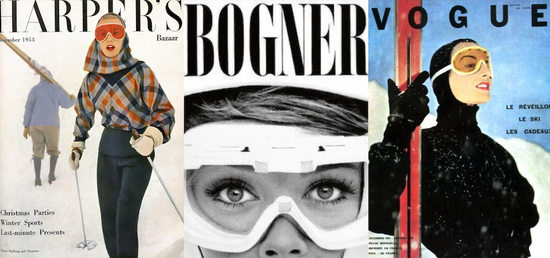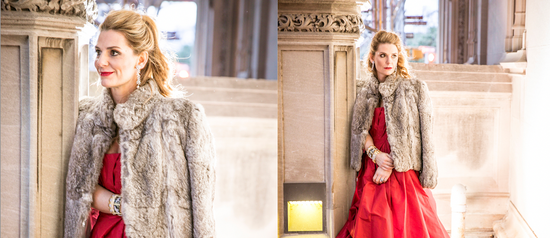Dressing for the occasion always applies, especially when you're lounging by the pool or strolling along the Caribbean shore. Known colloquially as “Resort wear,” this genre of clothing—characterized by loose silhouettes and breezy fabrics—dates back to the 1920’s, when socialites and starlets sought glamorous pieces to complement the exotic allure of their vacations. The legacy left behind from this golden era does not just detail the luxurious getaways of the elite, but rather a story of women’s sartorial liberation.
Distinguished by clean lines and geometric shapes, the Art Deco era ushered in a fresh aesthetic that resonated with the newly emerging “modern woman.” The interim years between the World Wars was a time of economic growth and strong technological innovation. This increasingly open-minded sensibility allowed women to wear clothing that reflected the time, embodying a fresh sense of personal autonomy and physical freedom.
From Paul Poiret’s harem pants to Elsa Schiaparelli's culottes, a variety of designers contributed significantly to the phenomenon of functional fashion, to be worn both in the French riviera and on the streets of daily life.

Paul Poiret
A French couturier credited with delivering women from the repressive corset, Paul Poiret epitomized Art Deco fashion through new silhouettes including the lampshade dress, and harem pants—baggy pants tapered at the ankle. Poiret designed most actively throughout the first two decades of the 20 th century, with his signature “hobble skirt” reaching peak popularity in 1910. Heavily influenced by the draping constructions of Japanese kimonos and Middle Eastern kaftans, Poiret’s signature looks showcase his expertise in draping fabric over the body to achieve both simplicity and luxury.
Coco Chanel
The French designer Coco Chanel introduced the concept of “beach pajamas" which revolutionized the 1920’s. A trailblazer of androgynous styles, she placed emphasis on the body’s natural movement through flowy fabrics such as silk and linen. Drawing inspiration from the high waists and wide legs of sailor pants, Chanel revolutionized pants for women and established them as a fashionable garment, rather than one worn only by working women and men. Though considered risqué at the time, since pajamas were associated with the bedroom, by the mid-1920's beach pajamas cemented themselves among the upper echelons of society and remain a fixture of Chanel’s legacy.

Chanel herself debuted beach pajamas as early as 1918, influencing her clientele— comprised of European actresses and wealthy international socialites—who wore the designs while vacationing in France’s Côte d’Azur.

Actress Evelyn Holt in silk beach pajamas, 1927.
Elsa Schiaparelli
French designers may have dominated the fashion world of the early 20th century, but Italian-born Elsa Schiaparelli's design brilliance is legendary. She changed the landscape of Parisian fashion by establishing her own eponymous couture house at 4 rue de la Paix in 1927. Known for her Surrealist designs—she had a longtime creative relationship with Salvador Dalí—Schiaparelli was largely influenced by Art Deco’s rectilinear aesthetic, combining traditional tailoring with unconventional designs.
For some time, Schiaparelli was an apprentice of Poiret’s and was undoubtedly influenced by his fabric-draping expertise; she began her career without formal training, and Poiret’s method allowed her to conceal the lack of technical prowess in her designs while simultaneously enabling freedom of movement in the women who wore the pieces. Schiaparelli's career began in 1927 with the “Schiaparelli Pour Le Sport” collection, focusing on sportswear for the modern, active woman. In 1931, Schiaparelli debuted her “jupe-culottes”—knee-length trousers cut to resemble a skirt—on the streets of London, designing a pair for the tennis player Lilí Alvarez that same year.

Madeleine Vionnet
Like the women who came before her, French designer Madeleine Vionnet believed in letting the fabric dictate the shape of a garment rather than forcing it to fit the body in a specific way. In the 1920’s, her couture house created the bias-cut, a technique of cutting across the cloth’s natural grain to make it carefully envelope the body; the female form was at the center of all her designs, flattering one’s natural curves without the restriction of a corset.

During the 1930’s, Vionnet often constructed garments using a single piece of fabric—silk gabardine, crepe de chine—without any fastenings to further embody the Art Deco’s obsession with motion.
Emma Domb
Based in San Francisco, American designer Emma Domb is a departure from the European influences that so-far governed the aesthetics of the first few decades. The Domb Manufacturing Company, owned by Domb and her daughter Lorraine, specialized in ultra-feminine occasion dresses.

Domb’s dresses are characterized by their full skirts, fitted waists, and draping layers of tulle, lace, and taffeta. Though certainly more formal than Chanel’s beach pajamas, or Schiaparelli’s culottes, Domb’s designs incorporate that same sense of swishing, liberated motion.
A long conclusion might sufficiently sum up these four decades of fashion, but no one says it better than Coco Chanel herself: “Nothing is more beautiful than freedom of the body.”




